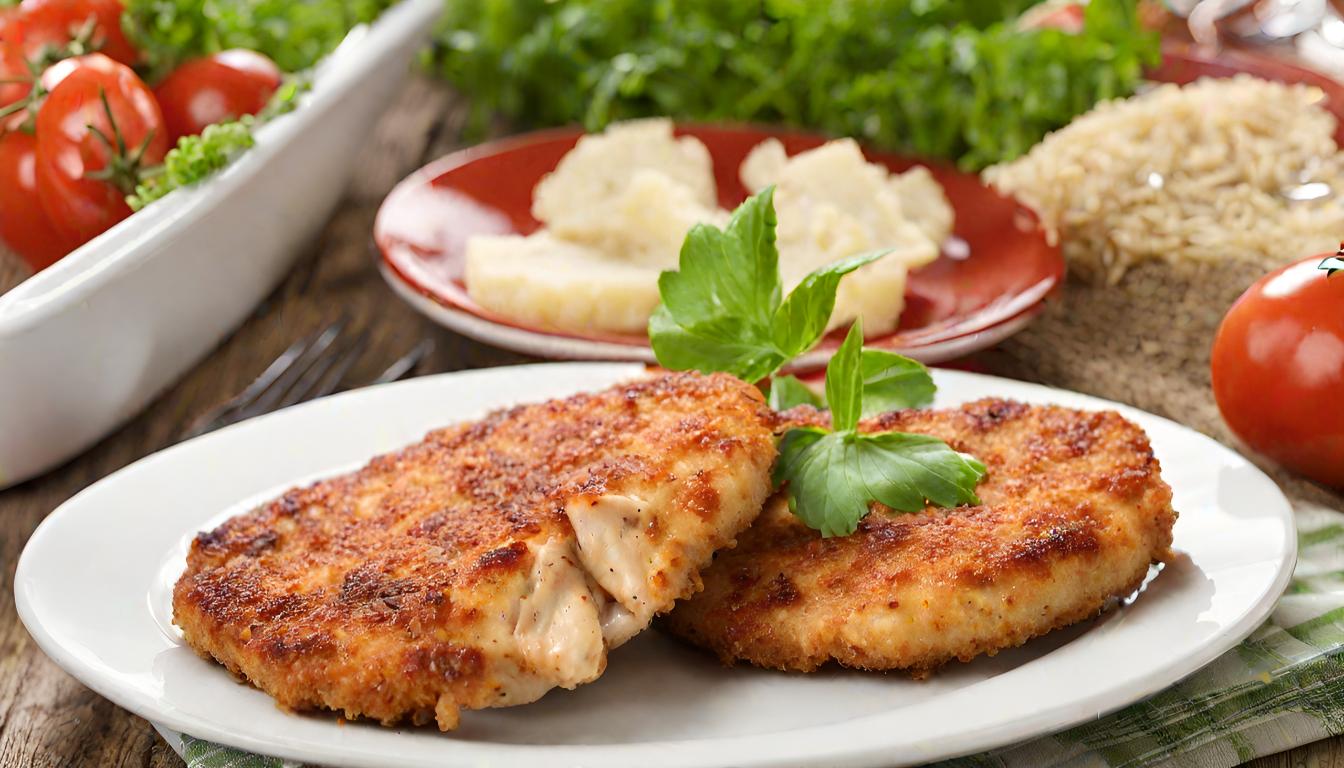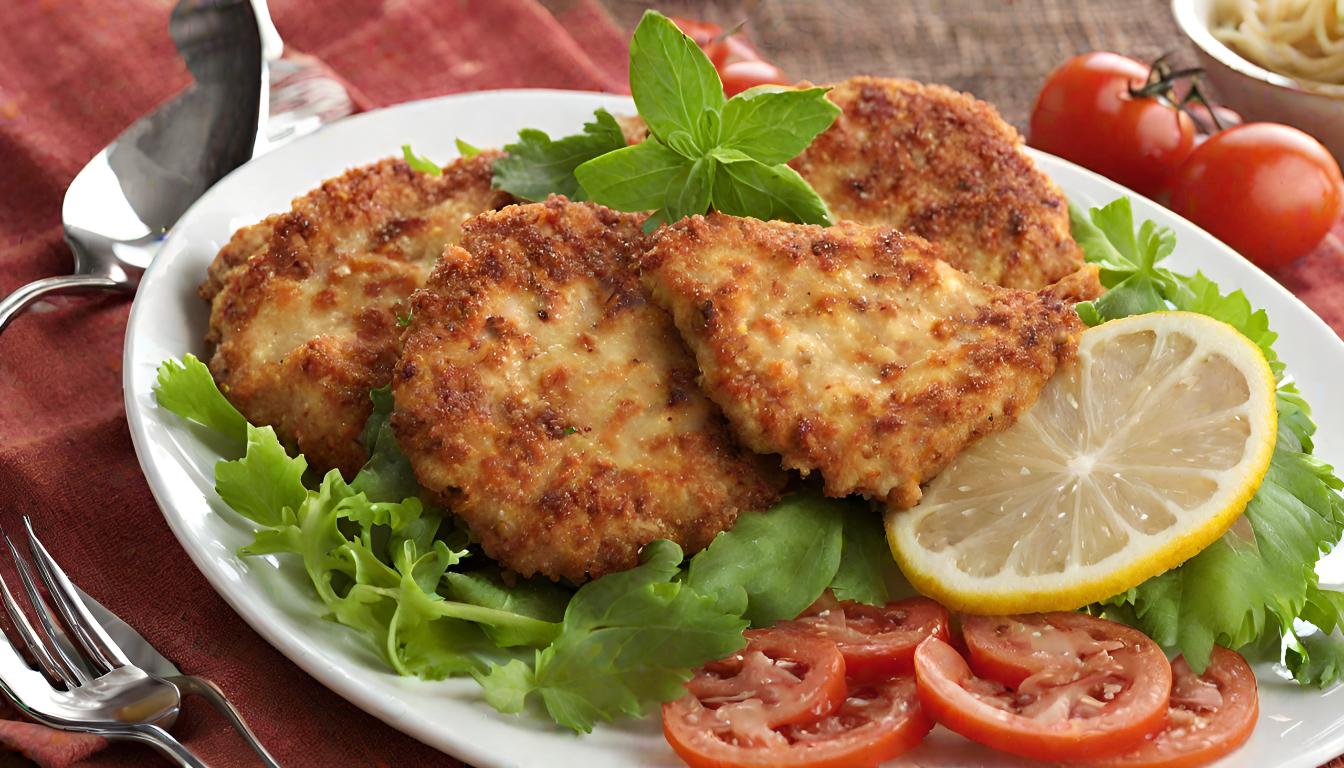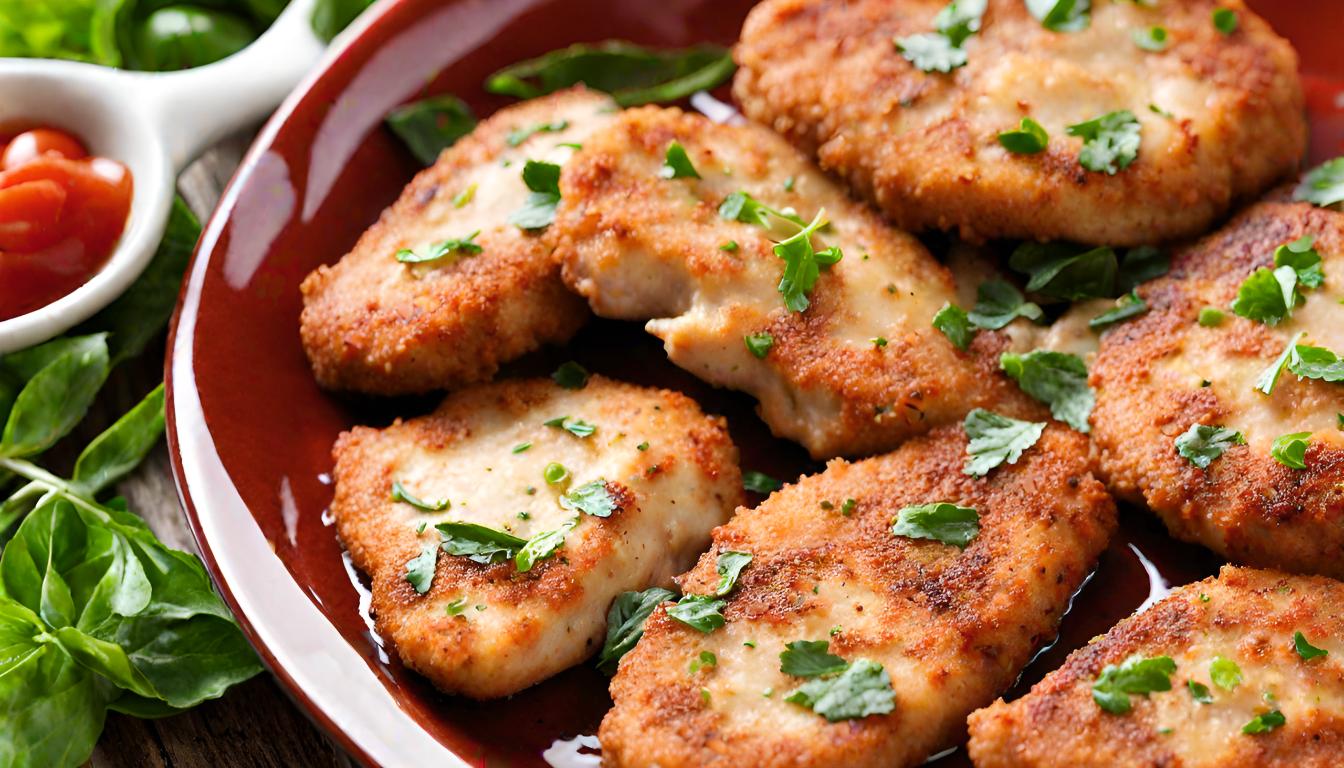This article takes you on a culinary exploration of Chicken Cutlets A Culinary Journey from Italy to America , linking traditional Italian cuisine to its American transformation. We dive into a diverse blend of flavors, methods, and histories, addressing the question: Do real Italians eat chicken cutlets? We explore regional differences, and new twists, delivering a guide for the curious and hungry.
Introduction to Italian Cuisine and Italian cuisine, renowned for its diversity, quality, and simplicity, offers a palette of flavors that has enchanted the world. The humble chicken cutlet sparks culinary debate: Is it truly Italian, or a tasty Italian-American creation?

Italian cooking, rooted in fresh ingredients and simple techniques, has influenced cooks globally. Though chicken isn’t as pivotal as pork or beef in Italy, it’s versatile, appearing in stews to roasts. However, in the Italian-American context, the chicken cutlet, crispy and tender, carves a distinct niche. Called cotoletta in Italy, it evolves in the U.S. to suit Italian immigrants’ tastes and available ingredients. This change underscores adaptation and innovation, establishing it as a favorite in American Italian cuisine.
But, do real Italians back home relish this dish as much as their American counterparts? exploring chicken cutlets’ origins, their importance in Italian cooking, and their adaptation by Italian-American communities is essential.
We explore chicken cutlets’ history and cultural impact, showcasing their role as a culinary bridge between Italy and America. Join us as we slice into the crispy exterior of this beloved dish, revealing the tender history within.
We’ll delve into chicken cutlets from Italian origins to modern takes and health views, offering an in-depth culinary analysis.
Explore with us the journey of chicken cutlets, from Rome to New York, highlighting the limitless appeal of great food.
Historical Context and Cultural Significance
The Origins of Chicken Cutlets in Italian Cooking
The tale of chicken cutlets starts in Italy’s varied culinary landscapes, where breading and frying meats is a centuries-old tradition. First used for luxury items like veal (cotoletta alla Milanese), this method soon embraced chicken as a readily available option. This change wasn’t just about swapping ingredients; it mirrored Italy’s regional diversity and changing dietary preferences.

Historically, the use of chicken in Italian cooking varied significantly from north to south. In the north, where dairy farms thrived, butter and cheese were key in cooking, even for breaded meats. Meanwhile, the olive-rich south favored olive oil for frying, creating distinct flavors and textures in their cutlets.
Cultural Significance of Chicken Cutlets in Italy vs. Italian-American Communities
Perception and Adaptation in Italian-American Cuisine
In the U.S., Italian immigrants tweaked recipes for local tastes, turning chicken cutlets, or cotolette, into a culinary evolution symbol. This dish showcases Italian-American cuisine’s fusion of tradition and innovation.
In Italian-American households, chicken cutlets quickly rose to prominence as a versatile and beloved dish. Lemon-served, as parmigiana, or in sandwiches, chicken cutlets blend Italian and American tastes, loved for their versatility.
Authenticity and Tradition
Back in Italy, the question of whether chicken cutlets are “authentic” Italian fare sparks interesting debates. Traditionalists might argue that the true cotoletta must be veal, as in the classic cotoletta alla Milanese. However, the reality of Italian cuisine is one of regional variations and personal interpretations. Just as the ingredients and dishes vary from one Italian region to another, so too does the concept of authenticity.
The value of chicken cutlets comes from embodying Italian cooking’s essence: choosing quality ingredients, sharing meals, and innovatively adapting traditions.
Exploring traditional Italian chicken cutlets’ creation and ingredients showcases the culinary mastery that endears this dish across cultures and ages.
Culinary Techniques and Ingredients
Preparing Traditional
The art of making traditional Italian chicken cutlets is a testament to the simplicity and quality that define Italian cuisine. At its core, the dish requires few ingredients, each playing a pivotal role in creating the final, mouthwatering result.
Ingredients: Highlighting the Simplicity and Quality
- Chicken: The dish’s centerpiece is usually boneless, skinless chicken breasts, thinly sliced and pounded for consistent cooking and softness.
- Breadcrumbs: Homemade or artisanal breadcrumbs are favored for sticking well to the chicken and achieving a perfect crispiness when fried.
- Eggs: Beaten eggs act as the glue, binding the breadcrumbs to the chicken.
- Cheese: Grated Parmigiano-Reggiano or Pecorino Romano adds a salty, umami depth to the breading.
- Herbs and Spices: A blend of parsley, garlic, salt, and pepper infuses the cutlets with classic Italian flavors.
Step-by-step Preparation and Cooking Techniques
- Pound the Chicken: Start with placing chicken slices between plastic wrap and gently pounding to even thickness, ensuring uniform cooking and tenderness.
- Season: Lightly season the chicken with salt and pepper, preparing it for the breading process.
- Dredge in Eggs: Dip each piece of chicken in beaten eggs mixed with grated cheese and parsley, ensuring a thorough coating.
- Bread with Breadcrumbs: Coat the egg-dipped chicken in breadcrumbs, pressing gently to adhere.
- Fry: In a skillet, heat olive oil over medium heat and fry the cutlets until golden brown on each side, achieving a crispy exterior while maintaining a juicy interior.
Comparison with Other Breaded Chicken Dishes
Chicken cutlets share similarities with various international dishes, each with its unique twist on breaded and fried chicken.
- Chicken Milanese: Essentially the Italian counterpart, often served with a light salad on top. The key difference lies in the presentation and the occasional use of veal instead of chicken.
- Schnitzel: This Austrian dish uses a similar technique but is traditionally made with veal or pork and served with a lemon wedge, emphasizing the meat’s flavor without additional toppings.
- Katsu: A Japanese variation that uses panko breadcrumbs for a lighter, crispier coating, typically served with rice and a tangy sauce.
Each of these dishes reflects the cultural preferences and culinary practices of its origin, yet they all celebrate the universal appeal of breaded, fried meat. The Italian chicken cutlet distinguishes itself through the use of specific Italian cheeses and herbs, making it a beloved dish that bridges traditional Italian and Italian-American cuisines.
In the next section, we’ll explore the modern interpretations of chicken cutlets, including dietary considerations and contemporary takes on this classic dish, further showcasing its versatility and enduring popularity.
Modern Interpretations and Dietary Considerations
As culinary traditions evolve, so too do the dishes that define them. Italian chicken cutlets, while deeply rooted in history, have not been immune to this evolution. Today, they are subject to a myriad of modern interpretations and adaptations, catering to a broader range of dietary preferences and health considerations.
Contemporary Takes
The versatility of chicken cutlets has allowed for creative reinterpretations, blending the lines between traditional Italian cuisine and global culinary trends. Fusion dishes, like those with spicy Asian glaze or Latin salsa, highlight cutlets’ adaptability. Modern Italian cuisine brings lighter, baked versions for a crispy, low-fat finish.
Vegetarian and vegan alternatives have also gained popularity, with plant-based proteins like tofu or seitan standing in for chicken. These versions often maintain the traditional herb and breadcrumb coating, ensuring that the essence of the dish remains intact, even as the core ingredients change.
Nutritional Aspects
The traditional method of preparing chicken cutlets—frying in oil—while delicious, can increase the caloric and fat content of the dish. Health-conscious cooks have sought ways to preserve the beloved flavors and textures of chicken cutlets while mitigating these concerns.
- Baking: A popular alternative to frying, baking chicken cutlets on a wire rack over a baking sheet can achieve a crispy exterior without the need for excess oil.
- Air Frying: The advent of air fryers has offered a way to mimic the crispy texture of fried cutlets with a fraction of the oil, significantly reducing the dish’s overall fat content.
- Ingredient Swaps: Using whole wheat or gluten-free breadcrumbs, and egg substitutes can cater to specific dietary needs without compromising on taste.
Making chicken cutlets healthier doesn’t mean sacrificing flavor. By incorporating high-quality ingredients and employing alternative cooking methods, it’s possible to enjoy this classic dish in a way that aligns with modern dietary preferences.
As we delve into the FAQs in the next section, we’ll address common queries about chicken cutlets, shedding light on their place in both Italian and Italian-American cuisines, and exploring the nuances that make this dish a subject of culinary curiosity across cultures.
FAQs (Based on “People Also Ask”)
Do Real Italians Eat Chicken Cutlets?
Yes, real Italians do enjoy chicken cutlets, though perhaps not as ubiquitously as their Italian-American counterparts. In Italy, cotolette (cutlets) are more traditionally made with veal, especially in dishes like cotoletta alla Milanese. However, chicken cutlets are enjoyed in many Italian homes, often prepared with a lighter touch, using olive oil for frying and served with a side of fresh salad or vegetables. The dish’s simplicity and deliciousness have earned it a spot in the repertoire of Italian home cooking.
How Do Italians Serve Chicken Cutlets?
In Italy, chicken cutlets are typically served as a second course, following a pasta dish. They might be accompanied by a simple side of roasted potatoes, a fresh salad, or sautéed greens. Italians lean towards a minimalist approach for cutlets, focusing on their crispiness and authentic flavors. On the other hand, Italian-American versions usually lean towards indulgence, often incorporating sauces or cheeses. Moreover, lemon wedges commonly accompany the dish, adding a crisp acidity that enhances its savory flavors.
Can Chicken Cutlets Be Considered Authentic Italian Cuisine?
Chicken cutlets fit into authentic Italian cuisine, showing regional and modern twists. Breading/frying is key in Italian cooking; chicken use highlights its adaptability. True Italian cooking values ingredient quality and careful prep, traits that well-made embody.
Differences Between Italian and Italian-American Chicken Cutlets
The primary differences lie in their preparation, serving, and accompanying flavors. Italian versions tend to be simpler, focusing on the quality of the chicken and the crispness of the breading, often seasoned with herbs and served with lemon. Italian-American versions often come with tomato sauce and cheese, making a heartier dish like chicken parmigiana.Both styles reveal cutlets’ versatility, anchored in tradition.
In the next section, we’ll conclude our exploration of cutlets, summarizing our findings and looking ahead to the future of this beloved dish within Italian and global cuisines.
Part 6: Conclusion
The Global Appeal of Chicken Cutlets and Their Place in Italian CuisineOur exploration of chicken cutlets shows a dish that crosses borders and cultures, capturing Italian cooking’s heart and its adaptability across the Atlantic.The humble cutlet, with its crispy exterior and tender interior, serves as a canvas for the rich tapestry of flavors that define Italian and Italian-American cuisines alike.
